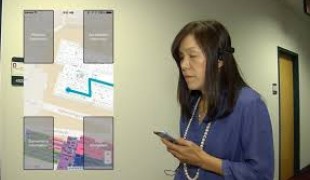- 10716
- 690
- 13
- 8
- 0
- Help Ukraine
About the solution
"We believe restaurant menus should be able to speak to guests: tell them what’s for dinner, what beverages are available, and what’s for dessert and speak in the guest’s preferred language! No more squinting in dim light or turning page after page of complex printed menus", says the company's website.
The device has a variety of buttons, each with braille markings, denote the different categories of food (starters, main course, appetizers, drinks, etc). Upon being pushed each button will list out loud the different dishes available as well as the cost.
Menus That Talk™ come in a variety of languages, the device itself is electronic and interactive, has the dimensions of a DVD box, and it is equipped with braille buttons.
The menus have now gone digital and have a function that allows guests to order from their menus in a variety of languages. The order is then relayed electronically to the kitchen and printed in English. This function is useful not only in restaurants but also for healthcare, and has already been adopted by the south Miami hospital. Menus That Talk are also equipped with an audio handset that is connected to the main device. This was thought of to enable diners who are hard of hearing.
More info: http://www.menusthattalk.com/
Adapted from: http://www.bespoken.me/forum/topics/menus-that-talk
What about you, do you have any solutions? Please share them with the Patient Innovation community!
https://www.youtube.com/watch?v=mtPQuZ90JE0
This solution shall not include mention to the use of drugs, chemicals or biologicals (including food); invasive devices; offensive, commercial or inherently dangerous content. This solution was not medically validated. Proceed with caution! If you have any doubts, please consult with a health professional.
DISCLAIMER: This story was written by someone who is not the author of the solution, therefore please be advised that, although it was written with the utmost respect for the innovation and the innovator, there can be some incorrect statements. If you find any errors please contact the patient Innovation team via info@patient-innovation.com
-
-
340
-
0
-
3370

Blind man creates software to help visually impaired people with the restaurants' menus
(SELF)-CARE: EATING: Eating independently.
(SELF)-CARE: DRINKING: Drinking independently.
Blindness
App (Including when connected with wearable)
Vision problems
Difficulty coordinating movements
Promoting self-management
Promoting inclusivity and social integration
Improving Speech and Communication
Caregiving Support
Neurology
Ophthalmology
United Kingdom
-
-
-
314
-
0
-
3787

Blind woman creates mobile app
CAREGIVING
BODY BALANCE: Maintaining body balance
WALKING: Walking
Blindness
Website
App (Including when connected with wearable)
AI algorithm
Restoring mobility
Promoting self-management
Promoting inclusivity and social integration
Maintaining Balance and Mobility
Preventing (Vaccination, Protection, Falls, Research/Mapping)
Raise awareness
Caregiving Support
General and Family Medicine
Ophthalmology
Pediatrics
Japan
-
-
-
569
-
2
-
12337

OmniPod® - a wireless insulin pump
(SELF)-CARE: EATING: Eating independently.
CAREGIVING
(SELF)-CARE: EATING: Eating independently.
diabetes type 1
diabetes type 2
Gestational Diabetes
Body-Worn solutions (Clothing, accessories, shoes, sensors...)
Enhancing health literacy
Promoting self-management
Restoring heart health
Managing diabetes
Manage Medication
Preserving Organ Function
Promoting inclusivity and social integration
To implement a diagnostic tool
To improve Treatment/Therapy
Preventing (Vaccination, Protection, Falls, Research/Mapping)
Raise awareness
Caregiving Support
Endocrinology
General and Family Medicine
Pediatrics
United States
-
 en
en